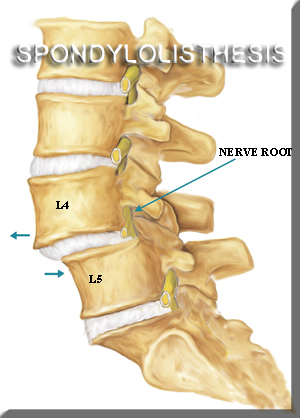Shoulder Pain: A Comprehensive Guide for Parents and Caregivers
 Shoulder pain is a widespread issue that affects people of all ages and backgrounds. Whether you are a parent juggling the responsibilities of work, children, and aging parents, or a professional trying to care for loved ones, understanding shoulder pain is crucial. This article offers a detailed look into the causes of shoulder pain and how to manage it effectively for the people you love.
Shoulder pain is a widespread issue that affects people of all ages and backgrounds. Whether you are a parent juggling the responsibilities of work, children, and aging parents, or a professional trying to care for loved ones, understanding shoulder pain is crucial. This article offers a detailed look into the causes of shoulder pain and how to manage it effectively for the people you love.
The Complex Nature of Shoulder Pain
The shoulder is a highly mobile joint, making it susceptible to injury and discomfort. Shoulder pain typically falls into three categories:
- Joint Problems
- Peripheral Soft Tissue Injuries
- General Discomfort or Tension
While each category has distinct causes, they often share overlapping symptoms. Whether your teenage child complains of discomfort after carrying heavy school bags or your aging parent is dealing with chronic joint pain, understanding these categories will help you make informed care decisions.
The Most Common Culprit: General Discomfort or Tension
The third category, general discomfort or tension, is the most frequently reported shoulder issue in a chiropractic setting. This type of pain is often described as a tightness or tension across the upper back, which can extend into one or both shoulders. Though many people assume this is a shoulder issue, it’s often a posture-related problem involving the spine.
Stress and Poor Posture: The Underlying Triggers
Mental stress and poor posture are two significant contributors to shoulder tension. The trapezius muscles, which run from the base of the skull down the spine to the shoulder blades, are particularly susceptible to strain. As parents, we often find ourselves hunched over computers, holding children, or assisting aging parents, all of which can lead to poor posture.
Pro Tip for Parents: Encourage your children to maintain good posture during their screen time and consider your own work-from-home setup to ensure you’re sitting correctly. Likewise, ensure aging parents have supportive seating to avoid slouching, which can aggravate shoulder and back issues.
While stress management and posture correction can help alleviate some of this tension, these are often temporary solutions. For many people, the underlying cause is spinal misalignment, which exacerbates muscle tension and spasms.
The Chiropractic Approach: A Solution for Spinal Misalignment
A visit to a chiropractor is often the most effective way to address spinal misalignments that contribute to shoulder tension. Chiropractors are trained to evaluate the spine and identify misalignments that cause the muscles around the shoulder and upper back to tighten. A chiropractic evaluation can provide a deeper understanding of your shoulder discomfort, and regular adjustments can prevent the pain from recurring.
Peripheral Soft Tissue Injuries: The Rotator Cuff and Beyond
The second category of shoulder pain involves injuries to the muscles, tendons, and bursae around the shoulder joint. This is often seen in physically active individuals or in those who frequently perform repetitive motions, such as lifting or throwing.
Common Injuries Include:
- Rotator Cuff Tendonitis or Tears: The rotator cuff is a group of muscles and tendons that stabilize the shoulder. Injuries to this area can cause sharp pain and limited movement.
- Bursitis: This occurs when the bursa, a small fluid-filled sac that cushions the shoulder joint, becomes inflamed.
These injuries can result from overuse, trauma, or improper lifting techniques. Whether your child is involved in sports or your spouse engages in physical labor, these types of injuries can occur suddenly or develop over time.
Treatment Options:
- Physical therapy is often recommended to restore strength and flexibility.
- In severe cases, surgery may be necessary, though less invasive treatments should be explored first.
Tip for Busy Parents: If you or your spouse engage in repetitive physical activities, take preventive measures by learning proper lifting techniques and ensuring that your workspace or home environment is ergonomically sound.
Joint Problems: The Challenge of Aging and Degeneration
As we age, our bodies undergo various degenerative changes, and the shoulder is no exception. Conditions like arthritis, frozen shoulder syndrome, and capsulitis can develop over time, especially if past injuries were not adequately treated.
- Arthritis: This condition involves the gradual wearing down of cartilage within the joint, causing pain, stiffness, and limited range of motion.
- Frozen Shoulder Syndrome: Also known as adhesive capsulitis, this condition causes stiffness and pain, severely limiting movement. It tends to develop slowly and can be linked to prolonged periods of inactivity or poor posture.
- Capsulitis: Similar to frozen shoulder, capsulitis involves inflammation of the shoulder capsule, resulting in pain and restricted movement.
For Aging Parents: Shoulder issues are common among seniors due to wear-and-tear or previous untreated injuries. Regular movement, gentle stretching, and physical therapy can help maintain shoulder mobility. Early chiropractic intervention can also help prevent the onset of degenerative shoulder conditions.
Holistic Prevention and Care for the Entire Family
Caring for the people you love means understanding the importance of preventive health care, especially when it comes to musculoskeletal issues like shoulder pain. Chiropractic care, posture improvement, regular exercise, and stress management are powerful tools to prevent and manage shoulder pain in your family.
- For Children: Teach them the importance of posture, particularly when they are engaged in schoolwork or screen time.
- For Spouses: Support each other by encouraging regular exercise and maintaining an ergonomically sound environment at home and work.
- For Aging Parents: Encourage gentle exercises that promote flexibility and mobility, and consider chiropractic care to manage both acute and chronic shoulder issues.
References
- American Chiropractic Association on Tendonitis
The American Chiropractic Association (ACA) is a trusted resource for understanding the role of chiropractic care in managing musculoskeletal issues. In their coverage of tendonitis, ACA explains how chiropractors address inflammation through natural treatments like adjustments, stretching, and ergonomic advice. Their guidance is particularly helpful for individuals who want non-invasive solutions for wrist pain. Learn more from the American Chiropractic Association on Tendonitis - Mayo Clinic: Understanding Wrist Pain and Tendonitis
Mayo Clinic is a globally recognized medical institution, and its resources provide detailed insight into various health conditions, including wrist pain and tendonitis. They offer expert advice on diagnosis, treatment options, and when to seek medical care, making it a go-to source for anyone experiencing wrist issues. Their wrist pain guide is particularly useful for busy professionals and parents looking for reliable medical information. Visit Mayo Clinic’s page on wrist pain and tendonitis - National Institutes of Health (NIH): Tendonitis Overview
The NIH is a reputable source for comprehensive medical information, providing detailed explanations of tendonitis symptoms, causes, and treatment methods. For those looking to understand the biology behind wrist inflammation and pain, this resource breaks down the condition in an easy-to-understand manner, offering evidence-based advice for managing tendonitis. Explore the NIH’s overview on tendonitis. - Harvard Health Publishing: Wrist Pain and Tendonitis
Harvard Health Publishing draws on the expertise of Harvard Medical School to offer practical, research-backed information on a wide range of health issues, including wrist pain and tendonitis. Their article on wrist injuries is especially helpful for understanding how tendonitis develops and how to prevent and treat it, making it a valuable resource for both professionals and caregivers. Read more at Harvard Health about wrist pain and injuries




No Comments